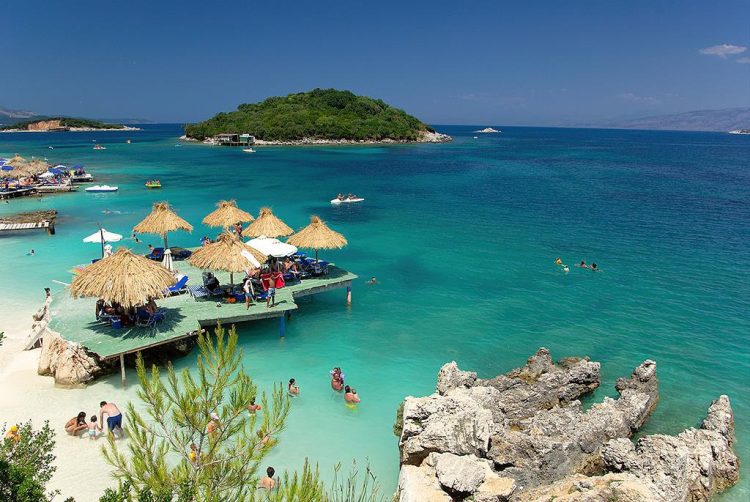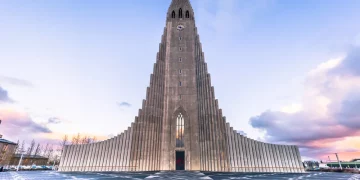Surge in Digital Nomads and Budget Tourists Sparks Policy Shift
Albania has spent the past few years moving from a regional secret to a rising star in European travel, drawing everyone from digital nomads to adventure backpackers. With rugged coastlines, affordable cities, and one of the most relaxed entry systems in Europe, Albania became a natural magnet for travelers in the post-pandemic era. But as tourism numbers ballooned through 2023 and 2024, the Albanian government found itself reevaluating a policy that once worked in its favor: visa-free stays for many foreign nationals with minimal checks. In 2025, that’s changing.
The rise in long-term stays by digital nomads—many of whom initially entered Albania under 90-day tourist allowances and never left—pushed the system to its limits. While many remote workers contributed to local economies by renting apartments and supporting co-working cafés, others sparked friction with locals as real estate costs rose and unregulated short-term housing grew in Tirana, Sarandë, and Vlorë. Local residents in popular expat districts began complaining about rent inflation and lack of legal enforcement for shared spaces or guesthouses that were technically residential.
In parallel, Albania saw an influx of “border hoppers” from Schengen-zone countries. Due to its geographic location outside the Schengen Area, the country became a convenient “reset” destination for travelers who had maxed out their 90-day EU allowance. Travel influencers promoted this tactic widely, creating waves of temporary residents arriving via bus from Montenegro, ferry from Corfu, or flights from Italy. The result was a tourism scene heavily populated with individuals looking to bend borders—legally or otherwise.
Albanian authorities, now under pressure from EU accession negotiators, began revisiting their border leniency. As of early 2025, new visa regulations are in place that reshape how long tourists can stay, how digital workers must register, and how reentry is timed for those arriving from Schengen neighbors. The changes mark a shift from laissez-faire policy to structured openness—one that’s still tourist-friendly, but more strategically managed.
New Rules Affect Long Stays and Border Access from Schengen Zone
The most immediate impact of Albania’s 2025 tourism policy update is on length of stay. Previously, nationals from over 80 countries could enter Albania without a visa and remain for 90 days within a 180-day window. Enforcement was loose, and reentry was often allowed simply by exiting and returning after a few days abroad. That window has now tightened.
In 2025, the 90/180-day rule remains in principle, but with clearer tracking and border digitization. Tourists can no longer rely on back-to-back stays or informal reentries without scrutiny. Border agents now have real-time access to entry/exit records, meaning any overstay—even by a few days—can result in fines or temporary bans.
For those using Albania as a Schengen workaround, this means planning carefully. Albania is still outside the EU, but its borders are no longer blind to Schengen exit data. In practice, travelers using Albania to reset their 90-day EU clocks must now observe stricter cross-border limits and be ready to show onward travel plans. Albanian and Schengen authorities are coordinating entry data more actively, especially at coastal ports and land crossings with Montenegro and Greece.
More significantly, digital nomads are now required to register their presence within 30 days of arrival. A simplified Digital Residency Permit is available for remote workers who meet income minimums and agree to local tax registration for stays over 90 days. The government has partnered with local municipalities in Tirana and Shkodër to set up “Digital Desk” offices, offering information on health insurance, taxes, rental agreements, and legal work permissions.
These changes are not intended to discourage long-term tourism, but to legitimize it. Albania still wants remote workers, but it wants them to contribute formally to local systems—especially as housing and healthcare pressures rise in fast-growing urban hubs. Tourists just passing through can continue enjoying short-term stays without a visa, but those building lives here will need to file basic paperwork and respect length-of-stay rules.
Crucial for Trend-Following Readers Building Balkan Itineraries
For readers planning long, meandering trips through the Balkans in 2025, these changes are especially relevant. Albania remains one of the most budget-friendly and naturally beautiful destinations in Europe, but itinerary flexibility now requires awareness of border rhythms and registration rules.

Many first-timers underestimate how central Albania has become to multi-country Balkan adventures. With affordable ferry access to Greece, new rail links with North Macedonia, and expanding bus networks into Kosovo and Montenegro, Albania is often the axis around which regional travel turns. But with visa policies tightening, spontaneous detours and Schengen gap stays need more structure than they used to.
Travelers looking to linger should now consider applying for the digital nomad permit if they plan to stay longer than 90 days—or even multiple shorter stays within a 6-month window. It’s a straightforward online application, and the government has made English-language resources more accessible. Successful applicants can open local bank accounts, enroll in national health insurance, and sign long-term leases.
Another key update: those entering from Schengen countries now undergo more thorough document checks. For example, a traveler arriving via ferry from Corfu can no longer assume automatic reentry privileges after a recent Schengen overstay. Passport control is now more robust, with random checks on hotel bookings and proof of sufficient funds.
Travelers should also note that certain regional exceptions still apply. Citizens of Kosovo, Turkey, and a few other Balkan nations continue to enjoy longer visa-free stays under separate agreements. However, Western travelers from the US, UK, Australia, and Canada will all fall under the updated 90/180 system with stricter resets and no tolerance for repeat short-stay abuse.
For road trippers, bus travelers, and backpackers, this means mapping out time more carefully. Planning to stay in Albania for 45 days, then moving through Montenegro and back into Albania later in your journey, may not be possible without counting your days meticulously or applying for a long-stay permit in advance.
The Big Picture: Balance Between Openness and Order
The core challenge facing Albania in 2025 is the same one facing other emerging travel hotspots: how to remain welcoming while avoiding being overwhelmed. The surge in tourism was celebrated for rebuilding post-pandemic economies, but it also sparked unease among local residents—especially in cities where rents rose faster than wages and local identity risked dilution in the face of unchecked digital nomadism.
Albania’s visa update aims to create balance. The country doesn’t want to turn its back on the very travelers who helped bring it into the global spotlight. It just wants to ensure that growth happens with structure. Tourism officials have emphasized that the new policies are not barriers, but frameworks that allow the right kind of tourism—longer, more responsible, and more engaged.
For readers mapping their 2025 travels, Albania remains an incredible destination. Its coastline still dazzles with unspoiled beaches. Its mountains still offer hiking untouched by mass tourism. Its markets still serve food with soul, and its people still show a hospitality that’s hard to match anywhere else in Europe.
But it’s no longer a blank canvas for indefinite stays and casual visa runs. Albania is growing up—without growing cold.





















